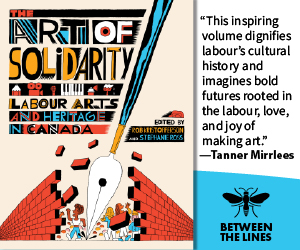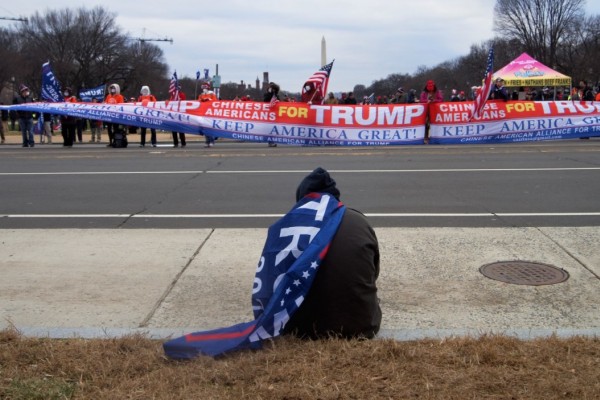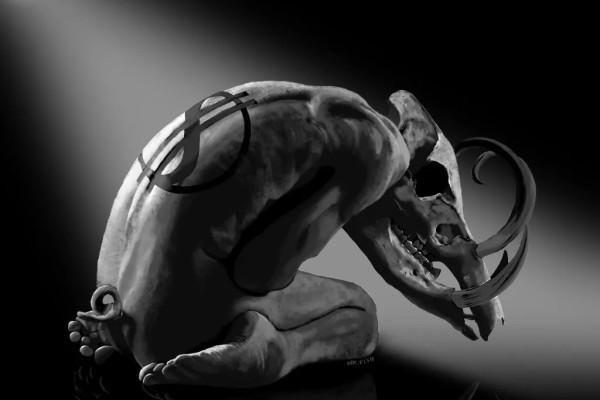A Real American without a country
Terry “Hulk Hogan” Bollea died effectively in exile, in a country that has never resembled him more than it does today

Hulk Hogan in 2011. Photo by Dave Moss/Wikimedia Commons.
“Stone Cold” Steve Austin was a wifebeater. Bret “Hitman” Hart was a serial philanderer. Scott Steiner tried to gouge out the eyes of his widely-beloved coworker, Diamond Dallas Page, during a backstage altercation. Jerome “New Jack” Young severed two arteries in the forehead of an untrained 17-year-old kid with a surgical scalpel during a match, nearly killing him. Cash Wheeler of All Elite Wrestling allegedly pulled a gun on a guy during a highway altercation. According to her mother, “Sweet” Stan Lane of the Midnight Express might be Republican congresswoman and gun-rights activist Lauren Boebert’s long lost father.
All of that stuff is real (except, probably, the Boebert thing), yet wrestling fans still love those guys. Meanwhile, the recent death of 71-year-old Terry “Hulk Hogan” Bollea, arguably the biggest professional wrestling star of all time, has been marked by relatively muted tributes. These wan celebrations are reflective of Hogan’s dwindling stature within an industry he once defined. The last time the former 12-time world champion appeared on live WWE television, in January 2025, it was to celebrate a $5 billion broadcast deal between the company he’d helped build into a global behemoth and Netflix: he was viciously booed throughout the segment by the 18,000-strong crowd at Inglewood, California’s Intuit Dome. In the wake of his death six months later, some publications openly wondered if any on-air remembrances by his former employer would be met with a similarly hostile reception.
There is always a sort of moral relativism at play in the way a fandom judges the sins of its idols. Wrestling fans are certainly well-accustomed to looking the other way when their favourites behave badly outside of the ring. Depending upon one’s own personal hierarchy of harmful behaviours, it would be easy to argue that Bollea’s various offences were of lesser severity than those of Austin or New Jack. And yet his transgressions clearly have a uniquely galling quality for how precisely they seem to poke at our collective resentments of the wealthy, the undeserving, the shameless grifters. The most instructive aspect of Hogan’s downfall is what it tells us about the changing values of contemporary fans—and of our endless broader culture war.
Hingeing an essay on the assertion that “[insert person/idea/thing] is America” is the sort of wobbly trope that would result in an instant D- on an undergraduate essay, but in the 1980s, that’s how Hogan was sold to the world by the WWE (then the WWF) and its architect Vince McMahon. Strutting to the ring to the tune of Rick Derringer’s “Real American” at a billed (and real-ish) 6’7, 300 pounds, the Hulkster was physically larger and stronger than most of the monstrous, often colourfully foreign heels he battled. But he was also greater of soul. By their nature, wrestling matches tell simple stories, and Hogan’s formula was simpler than most: first, Hulk dominates with basic punches, kicks, and slams; his opponent cheats to gain an advantage and beats on the champion, subjecting him to a litany of painful holds and rule-bending blows. Hulk eventually draws on the passion of the crowd to fire up, shrug off the heel’s offence, and win with his signature big boot and leg drop combo. Despite Hogan’s agonized pantomime as he endured these villains’ underhanded tactics, the outcome of his matches was seldom in real doubt. He was better because he was stronger, and stronger because he was in the right. To root for the Hulkster was to root for the inevitable victory of a morally superior juggernaut, to be reassured of American supremacy in what would turn out to be the Cold War’s last gleaming.
In the 35 years that followed Hogan’s heroic apogee (he also had a short late-90s renaissance as the villainous “Hollywood” Hulk Hogan in World Championship Wrestling), he made plenty of money on the nostalgia circuit in both wrestling and pop culture. But as large swaths of the public have begun to look on the pages of recent American history as a record of capitalistic rot, Hogan’s own reputation has suffered in turn. The first real chink in his armour came with 1994’s United States v. McMahon (better known as “the steroid trial”), in which the federal government prosecuted Vince McMahon on trafficking and embezzlement charges. Hogan, who’d always insisted his gargantuan physique was the result of milk, vitamins, and prayer, admitted in the course of testifying (in his by-then former boss’s defence) that he’d been on the juice since 1976 but had recently gone off the stuff. And indeed, between 1994 and 1997, when the industry quietly agreed it was safe to let the boys start using again, Hogan’s body literally shrunk—and with it some of his aura. While Hogan’s biceps would recover, this first very public lie formed a crack in his façade that would only spread in the years to come.
In an industry of liars, Bollea was one of its most inveterate and absurd fabulists. From claiming that he’d been invited to become Metallica’s permanent bass player in 1986 to saying André the Giant died after Hogan bodyslammed him in the main event of 1987’s Wrestlemania III, he could scarcely get through an interview without dropping a bizarre new bushel of fibs. What might’ve been indulged as an endearing carny quirk from a thoroughly dotty legend was cast in a less flattering light by persistent accounts of his backstage politicking. He shrewdly negotiated contracts which allowed him creative control over how his character was depicted onscreen, and was notorious for using these provisions to avoid “putting over” (losing to) talents who threatened to rival his popularity, even when the occasional loss might have been good for the wrestling business as a whole. He tended to enhance his influence by forming close relations with the bosses: his friendship with WCW Executive Producer Eric Bischoff was widely blamed for unpopular creative decisions that hobbled the once-hot company in the late-1990s, and fellow wrestler (and future Minnesota governor) Jesse “The Body” Ventura never forgave Bollea for stooling on him to McMahon when Ventura attempted to form a WWF wrestler’s union back in 1986.
Given the mafia-like temperament of promoters and the degree of well-founded distrust between wrestlers of the era—a by-and-large fiercely libertarian bunch—it’s unlikely Ventura’s union would’ve taken root even had Hogan stayed out of the matter. But that it was Hogan, the wealthiest and most nakedly self-interested of the lot, who betrayed the effort rankled newer generations of fans. Smartened up by the plethora of backstage dirt available online, fans increasingly saw wrestlers not as boneheaded brawlers but as exploited artists. Since the steroid trials, American wrestling had increasingly begun to spotlight more athletic, less obviously-juiced performers like Bret Hart and Shawn Michaels whose work borrowed from the up-tempo styles practiced in Mexico (lucha libre) and Japan (puroresu). Wrestling became simultaneously more high-impact and more balletic, with younger purists favouring elaborately choreographed epics over the simple pugilism of the form’s golden age. Hogan’s safe, plodding style became synonymous with laziness, his politicking seen as holding down hungrier, more talented workers. In these new fans’ minds, Hogan was about cynically making money, not art.
It didn’t really matter to them that most of Hogan’s peers shared his mentality. Wrestling is an appallingly taxing way to make a living, especially given the brutal touring schedule and concrete-stiff rings of the 1980s-era WWF. In the old days it had a tendency to beat the auteurism out of its practitioners. It was a mark of Hogan’s once-in-a-generation charisma that he was able to get the reactions he did while taking so few risks, and nearly all of his co-workers would’ve happily done his act if it came with a fraction of his stardom. Working a program with Hogan meant drawing the biggest paycheques most of them would ever make while taking the fewest bumps—receiving Hogan’s offence was described by several opponents as like being gently buffeted by pillows. While the work of some of his peers has better survived the test of time aesthetically, too many of them wound up debilitated or in early graves long before the Hulkster did, carried there by drug addictions begun in hopes of deferring the pain that came from top-rope dives, high-impact slams, and tens of thousands of miles on the road.
Despite the qualms of pro wrestling aesthetes, Hogan was too great a star to be entirely rejected by the sports entertainment world, and he could usually be counted on to deliver a big crowd pop during his sporadic later appearances. But, by the end, the “Controversies” section of his Wikipedia page had begun to bulge alarmingly. There were the appallingly racist and homophobic comments captured on a sex tape leaked by his supposed friend, the shock jock Bubba the Love Sponge; his Satanic bargain with financier Peter Thiel to sue gossip blog Gawker out of existence for publishing said tape; a series of affairs and an ugly divorce; and, latterly, a full-throated endorsement of Donald Trump. It was this last offence that earned him the lusty opprobrium of that Inglewood crowd earlier this year, a scene that underscored what a man out of time Bollea truly was, especially by the end.
If in 1986 the US president had been a member of the WWE Hall of Fame, a close personal friend of Vince McMahon, and had Hulk Hogan stumping for him on the campaign trail, it would’ve been the greatest public relations win anyone in the wrestling business could have possibly imagined. In 2025 it was simply awkward, with the company quietly distancing itself from the Hulkster just as it had the now-disgraced McMahon, whose name hung about the company’s neck like a millstone after a storm of nightmarish sexual abuse allegations finally forced his retirement the previous year. Thus did the Immortal Hulk Hogan, the Real American, die effectively in exile, a man without a country in a country that has never resembled him more than it does today.
It is difficult to see any popular figure of the past half-century outside the lens of the culture war. But, having now laid Terry Bollea’s life out on the dissection table, we must return to the question we began with: what made “the people” turn on him? Or, rather, what did the people get out of hating Hulk Hogan? It will hopefully be taken by the reader as a given that being a racist, even a private one, is a bad thing. Trumpism, while by no means the only poisonous strain of American political culture, is a blight on our time. Those who betray their fellow workers to curry favour with management are without honour. Ultimately though, Hogan’s are more the crimes of a mascot than of a citizen. If any fusion of the public/private Hogan/Bollea chimera did real damage to American life, it was in the same sense that an overinflated parade float bulbously setting off a few car alarms and getting stuck on a lamp post is damaging to a city that is simultaneously being flooded, firebombed, and swarmed by killer bees.
What the fans in Inglewood and online really got when they jeered Hogan was the satisfaction and catharsis of watching a despicable onscreen heel get his comeuppance—and, in a respect that has always been the privilege of an audience turning on a performance, to be the instrument of that comeuppance. For many, it must have felt like an exercise of collective morality, some small way of rejecting the current state of affairs. But it was fighting back as a form of self-entertainment. After Hogan’s segment, the audience didn’t turn on the event or WWE as a whole. Nearly all stayed to cheer their favourites and boo the other bad guys. And at the end of the night, Hogan and his bosses, as they always did, got paid.
Mick Zadro is an amateur (professional) wrestling historian and freelance writer based in Montréal.










_06_600_400_90_s_c1.jpg)